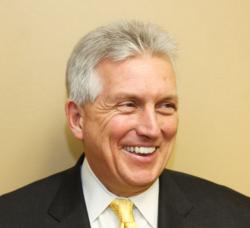Day: September 22, 2017
What Exactly is Leadership…Part 6 (Conclusion)
For the past few weeks we’ve been studying principles/characteristics of covenant relationships that effective leaders use. Today we’ll cover the last principle/characteristic that covenant leaders apply in their relationships.
Transformational More Than Exploitative
The leader-follower relationship, if it’s to be effective long-term, is more about transformation than it is about exploitation. Essentially, it’s the intentional transformation of people and organizations for the better. That clearly is a theme of Dickens’ Christmas Carol. As a result of being led by spirits of Christmas Past, Present and Future, Scrooge was transformed. These spirits led him through a series of purposeful and sometimes painful experiences that changed Scrooge and eventually achieved their intended outcomes. They brought him to an understanding of his own selfishness and awakened him to the needs of others around him. Scrooge chooses to use his resources to transform the lives of others because he himself had been transformed.
Transformational Leadership
James MacGregor Burns refers to this as transformational leadership. It’s a relationship where leaders recognize higher needs in followers (love, hope, meaning, esteem) and engage their full person by seeking to meet those needs and convert followers into leaders.
According to Burns,
“Transforming leadership ultimately becomes moral. It raises the level of human conduct and ethical aspiration of both leader and those led. It occurs when one or more persons engage with others in ways that leaders and followers raise one another to higher levels of motivation and morality. Purposes, which may have started out as separate, become fused.”
In other words, though leader-follower relationships begin with transactions, they shouldn’t end there. As leaders earn credibility and trust through transactions they also gain more power to influence and elevate followers in transformational ways. Using power to elevate followers and as Burns says, move them “…to higher levels of motivation and morality,” is primary evidence that leadership instead of power wielding is operating. It implies regard, respect and commitment to followers, apart from which leadership is relegated at best to supervision.
Jesus, A Transformational Leader
Over some 2,000 years of history and mounds of convincing evidence, no leader has influenced people or changed the world more profoundly than Jesus of Nazareth. In Jesus we have arguably the best example of a transformational leader.
Witness His relationships with disciples. Jesus understood both their intrinsic value and very human needs. Based on those needs, He engaged them in a transaction that He initiated, filling their boat with fish, and thereby gaining credibility. And as Jesus delivered on other promises to disciples, His credibility grew. Jesus related to followers in ways that demonstrated genuine regard. That regard was manifest in the many acts of love, kindness and service He extended to them. No doubt, these relationships were covenants, covenants so powerful that they changed their lives permanently.
Leadership that Deepens Commitment
As a leader, Jesus transformed followers in ways that deepened their commitment both to Jesus and to the common purpose they shared. Specifically, by teaching, healing, challenging and loving these mostly uneducated and sometimes cowardly followers, Jesus transformed them into courageous and committed leaders. His mission and values became their mission and values. In fact, so powerful was their transformation that they boldly carried on the organizational mission in ways that cost most of them their lives. Yet, the power to lead and transform His followers did not come through any worldly position Jesus held. Instead it came through the relationships Jesus established and the love, commitment, respect and sacrifice for followers He demonstrated. It’s a clear illustration that leadership is not a position; it is a relationship with enormous potential to achieve and transform people and organizations for the better.
